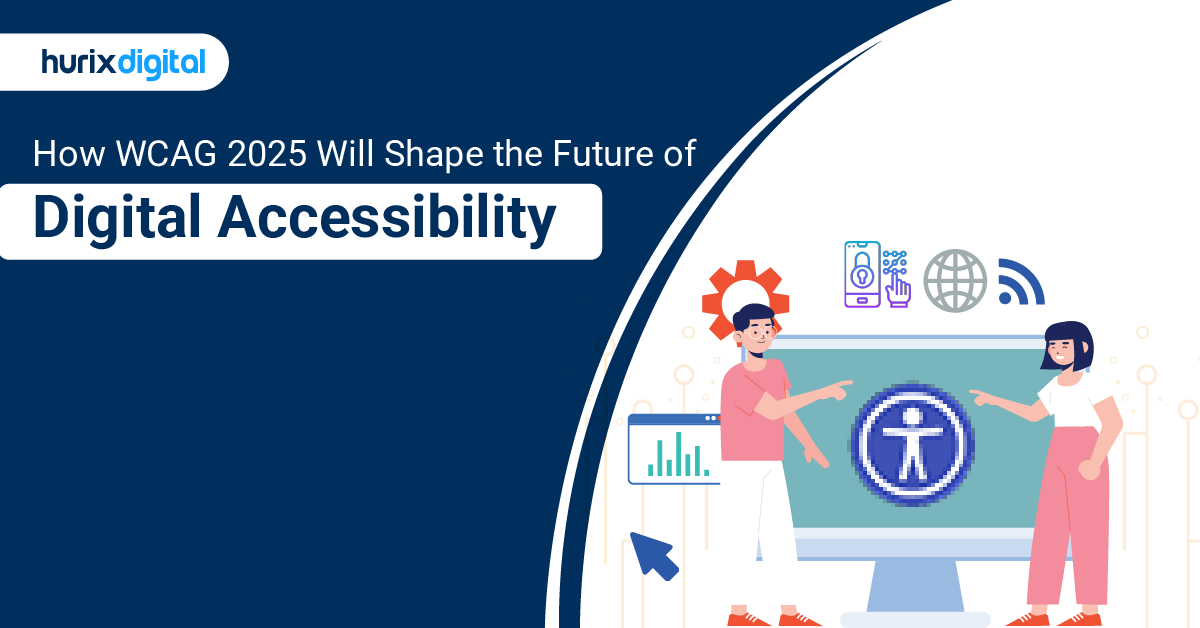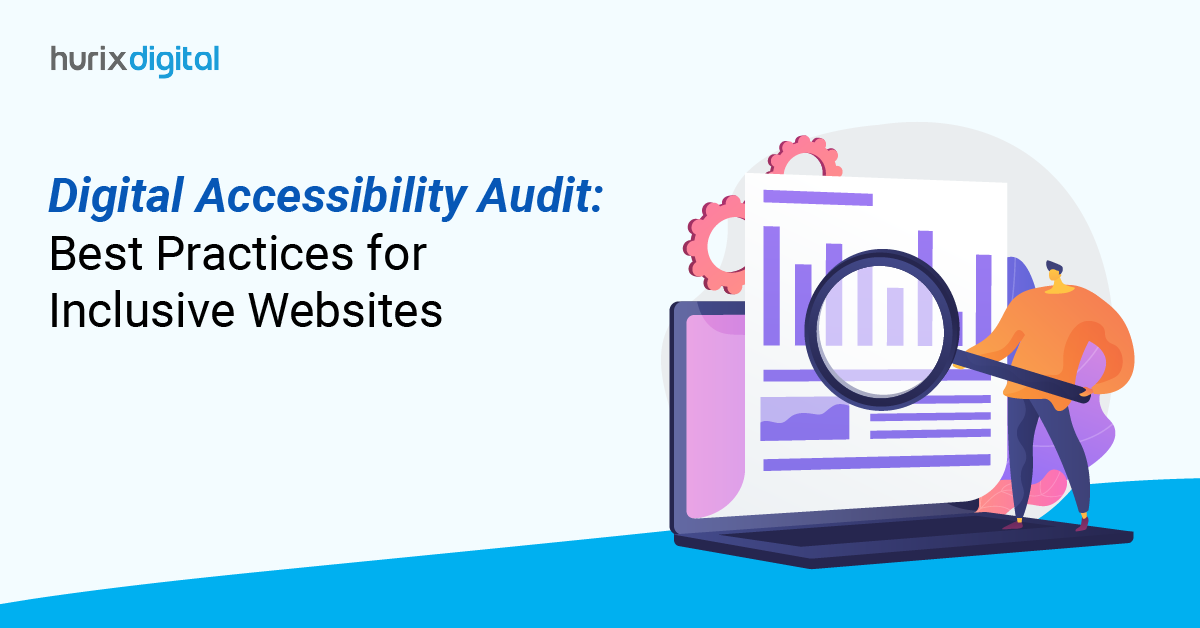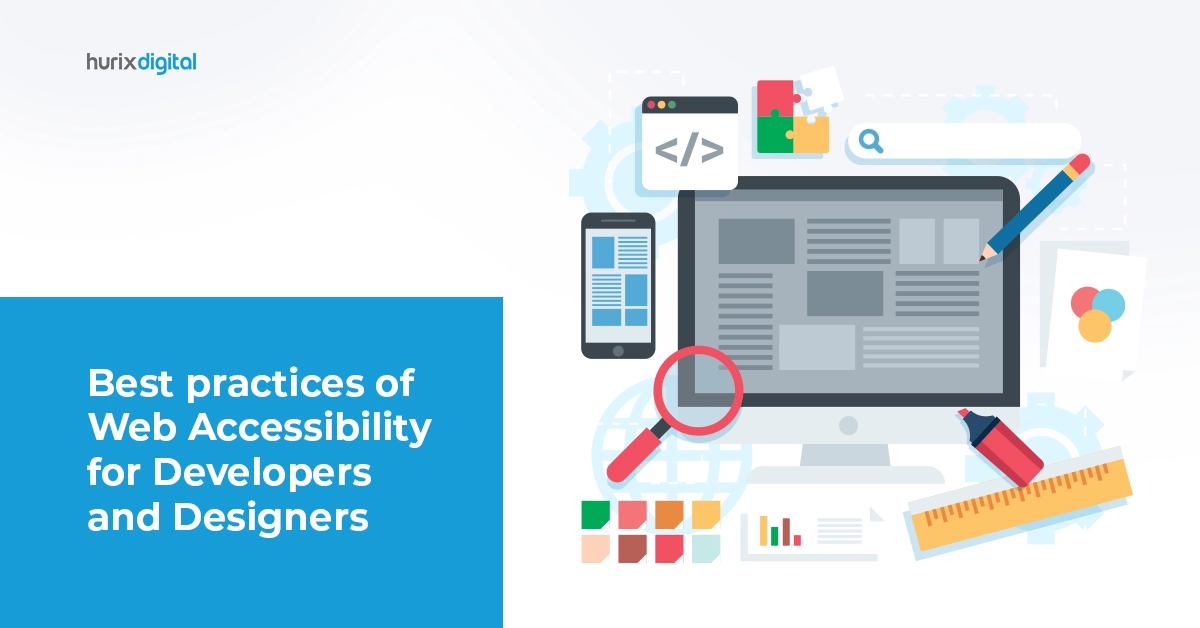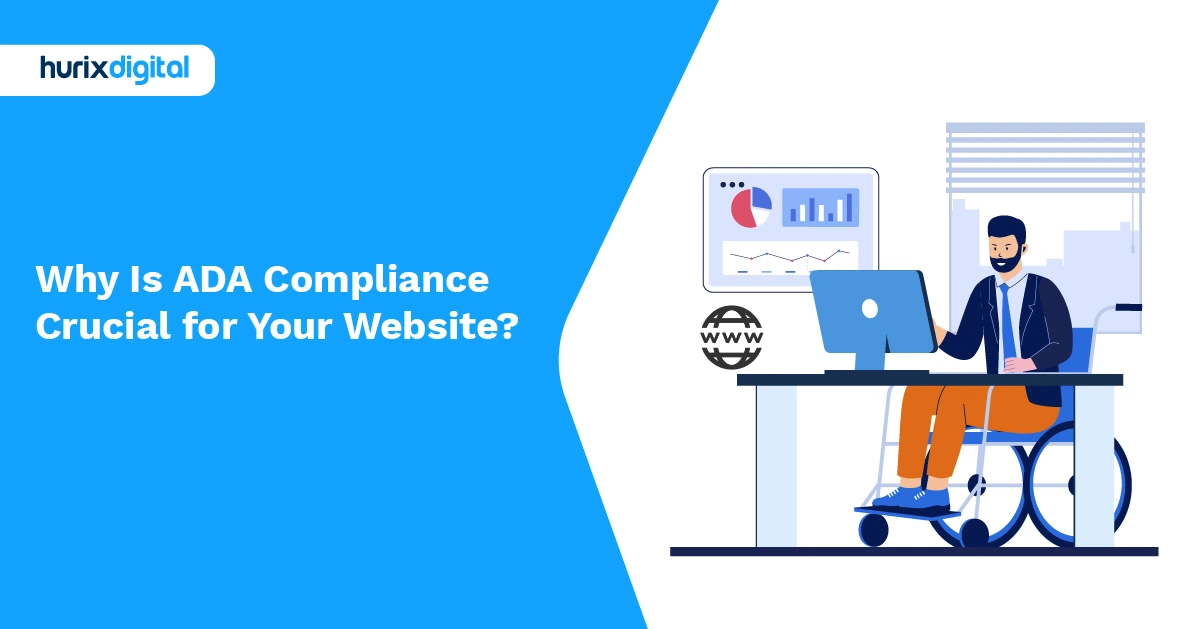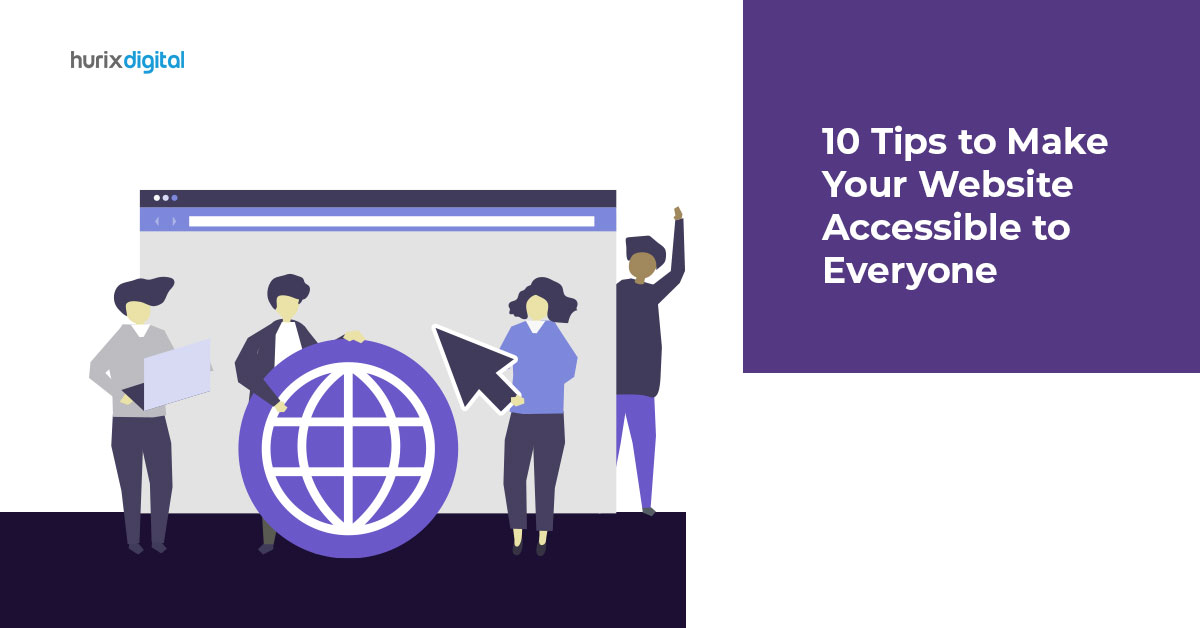
10 Tips to Make Your Website Accessible to Everyone
Summarize with:
An accessible website is a key element of digital inclusion. It ensures that everyone, irrespective of their physical ability, can access vital information on the internet. But what makes a website accessible? Unfortunately, many websites are not accessible. Almost 98% of web home pages, according to a WebAIM survey, contain at least one WCAG 2.0 failure.
Table of Contents:
- Why Should a Website be Accessible?
- How to Check Your Site’s Web Accessibility?
- 10 Proven Strategies to Make a Website Accessible to Everyone
- Understand the Guidelines and Standards
- Color Contrast Matters
- Use Descriptive Headings
- Use Alt Text for Images
- Include Captions and Transcripts for Multimedia
- Ensure Keyboard Accessibility
- Use ARIA Roles and Attributes
- Make Forms Accessible
- Provide Clear Navigation
- Test Your Website for Accessibility
- Conclusion
To enhance website accessibility, many companies implement the Web Content Accessibility Guidelines (WCAG). WCAG website compliance is widely regarded as the industry standard for website accessibility solutions. By implementing the ten tips mentioned in this article, you may broaden the audience you reach, increase the usability and inclusiveness of your website, and show that you value equality and inclusion.
Why Should a Website be Accessible?
A website should be accessible due to the following factors :
- Inclusivity: Being inclusive will guarantee that users and visitors of all abilities may use and access your website. This promotes the development of an online community where all members have access to the same resources and information.
- Legal Requirements: Websites must be accessible to individuals with disabilities according to numerous national laws and regulations. For instance, the Americans with Disabilities Act (ADA compliance for websites) in the United States mandates that companies and organizations make their websites accessible to individuals with impairments.
- Business Benefits: Your business may benefit from making your website accessible. You may reach a larger audience and increase consumer satisfaction by developing an inclusive online environment. Accessible websites can also help you rank higher in search results and get more visitors to your website.
- Ethical Considerations: Being accessible on your website is the correct thing to do. It demonstrates your appreciation for diversity and inclusion and your commitment to ensuring everyone has access to your website.
How to Check Your Site’s Web Accessibility?
To check your site’s web accessibility, you can:
- Use accessibility checkers like WAVE, Axe Accessibility, or A11Y Accessibility Checker.
- Employ automated testing tools, such as WebAIM’s accessibility testing tools or Google Lighthouse.
- Employ assistive technology, such as screen readers, keyboard-only navigation, and speech recognition software, to carry out manual testing.
- Work with a knowledgeable accessibility specialist to assess your website.
Also Read: 10 Easy-to-Implement Steps to Improve Accessibility on Your Website
10 Proven Strategies to Make a Website Accessible to Everyone
1. Understand the Guidelines and Standards
It’s important to understand the standards and accessibility requirements for websites before you start making your website accessible. The most extensively used set of principles for producing accessible web content is WCAG 2.1. Although these guidelines are usually used as the standard for digital accessibility, they are not enforceable by law.
2. Color Contrast Matters
For people with limited eyesight or color blindness, color contrast is crucial. Make sure there is a strong contrast between the text and backdrop colors to make the text readable. For standard text and large text, the WCAG specifies a contrast ratio of at least 4.5:1 and 3:1, respectively.
Almost 300 million people across the globe have some form of color blindness. Therefore, website owners must balance branding with color contrast. One of the best ways of doing this is by using black text on a white background and creating a more inclusive experience.
Let us take an example:
Apple’s website uses a minimalist design with high contrast between text and background. Its common theme is using black text on a white background and vice versa across its pages, which enhances accessibility. The website adheres to WCAG guidelines and is accessible to users with visual impairments.
3. Use Descriptive Headings
Making your website accessible to everyone requires using descriptive headings. Headings make your website easier to navigate and understand for those using screen readers and other assistive devices. Simply arrange your information using HTML heading tags (H1-H6) in a logical sequence that reflects the hierarchy of your content to employ descriptive headings.
The content that follows should be accurately summarized in the headings, which should be descriptive. Users will find it simpler to understand your website’s arrangement and structure as a result.
4. Use Alt Text for Images
Making your website accessible to all users requires using alt text for photos. Screen readers and other assistive technologies can read an image’s alt text, which is a brief description of the image. It makes it easier for those with visual impairments to comprehend an image’s information and its placement on a webpage.
To use alt text for images, simply add descriptive text in the “alt” attribute of the HTML image tag. Alt text should be concise, accurate, and convey the essential information of the image. In short, adding alt text to images is a simple and effective way to improve the digital accessibility of your website.
Let’s take an example:
A picture posted by Harvard University on X shows the track tryouts and how people have been running the steps at Harvard Stadium since it was built in 1903.
In this regard, a poor alt text would be “Harvard Runners.” However, a useful alt text can be “Harvard Stadium with two lone runners bounding up the steps.”
5. Include Captions and Transcripts for Multimedia
Add subtitles and multimedia transcripts to improve your website’s WCAG compliance score. Transcripts are written versions of video or audio content, whereas captions are text descriptions of audio content. Adding captions and transcripts to multimedia content helps people with hearing impairments to understand the content and context of the media.
To provide captions, add a text track to your video or audio file. To provide transcripts, create a text document that includes a written version of the audio content. Both captions and transcripts should be accurate, complete, and synchronized with the media.
Let’s take an example:
You can use YouTube’s automatic subtitles and caption feature using YouTube Studio and add transcripts and captions to your video content. As a video owner, you can make a few changes in YouTube posting settings, and you can make your website content accessible.
6. Ensure Keyboard Accessibility
Accessibility to the keyboard is crucial for individuals who might be unable to use a mouse. Ensure that your website’s keyboard interface can access all of its features and that users can traverse it using only the Tab key.
Let’s take an example:
A website must offer a visual indicator with a keyboard focus for sighted uses. Web browsers provide focus indicators and can be shown as a border or highlight around the focused element. These outlines can be hidden by applying outline:0 or outline:none CSS to focusable elements.
7. Use ARIA Roles and Attributes
ARIA (Accessible Rich Internet Applications) is a set of attributes that can be added to HTML elements to make them more accessible. Use ARIA roles and attributes to provide additional information to screen readers and other assistive technologies.
Let’s take an example:
The website 1% for the Planet follows its objective of “Putting people and the planet over profit,” and through its website, it shows its commitment to accessibility. The website uses high-contrasting text, ARIA tags, and thorough HTML page structuring. The content representation is simple and it is a fully mobile responsive website.
8. Make Forms Accessible
Forms are an essential part of many websites, but they can be difficult to navigate for users with disabilities. Ensure that your forms are accessible by providing labels for each input field, using ARIA attributes, and ensuring that error messages are clear and easy to understand.
9. Provide Clear Navigation
For all users, but especially for those with disabilities, clear navigation is crucial. Make sure users can quickly locate what they’re looking for on your website and that the navigation is simple to understand. Make sure that your website’s navigation is consistent throughout by using labels for links and buttons that are clear and descriptive.
Let’s take an example:
Medium is a blogging platform that has a stylish and accessible website. Users can experience parallax images, animated backgrounds, easily tabbable pages, navigational links, visual flair, and simple content.
10. Test Your Website for Accessibility
It’s crucial to assess your website’s accessibility to ensure everyone can use it. The WAVE Online Accessibility Assessment Tool and the A11Y Accessibility Checker are some of the many tools that can be used to check whether your website conforms with the WCAG.
Let us look at the features of one of these tools:
- WAVE is based on WCAG 2.1 Level AA and Section 508 standards and helps identify errors related to headings, links, images, forms, ARIA roles, color contrast, and structural elements.
- Errors are annotated directly on the web page, which can help you identify which elements have issues.
- Icons indicate errors and warnings for easy identification.
- The tool allows you to view the code while checking for accessibility errors.
Also Read: Digital Accessibility Audit: Best Practices for Inclusive Websites
Conclusion
Making your website user-friendly for everyone is a crucial first step in developing a more diverse online community. These 10 suggestions will help you make your website more accessible and inclusive while also making sure that no users with disabilities or impairments are left out.
Your website can be made accessible to everyone in a variety of ways, including utilizing informative headings, offering captions and transcripts for multimedia, and assuring keyboard navigation. If you need help in making your website accessible, consider Hurix Digital, a leading provider of digital solutions, including accessibility solutions.
Contact Hurix Digital today to learn more about our accessibility services and how we can help you make your website accessible to everyone.
Summarize with:

Vice President – Content Transformation at HurixDigital, based in Chennai. With nearly 20 years in digital content, he leads large-scale transformation and accessibility initiatives. A frequent presenter (e.g., London Book Fair 2025), Gokulnath drives AI-powered publishing solutions and inclusive content strategies for global clients
 Upcoming Masterclass | Build an Army of Brand Evangelists using Training & Development | November 20th, 8:30 AM PDT | 11:30 AM EDT | 10:00 PM IST
Upcoming Masterclass | Build an Army of Brand Evangelists using Training & Development | November 20th, 8:30 AM PDT | 11:30 AM EDT | 10:00 PM IST

